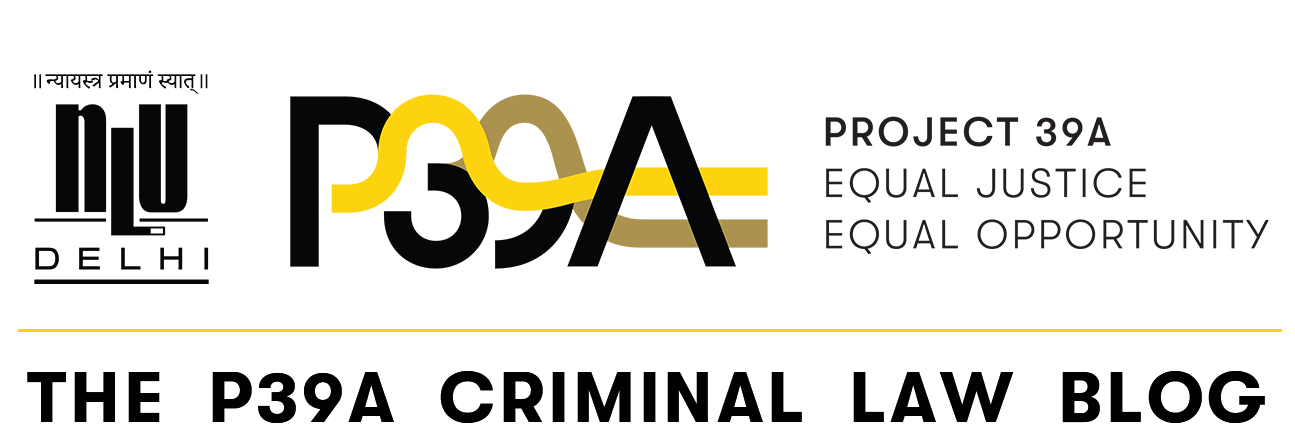This post analyses the implications of the newly-inserted provision criminalising making or publishing ‘false and misleading information jeopardising the sovereignty, unity and integrity of India’.
Articles
This post analyses the replacement of ‘sedition’ with the newly inserted provision seeking to penalise acts endangering the sovereignty, unity and integrity of India.
This post analyses the new provision prescribing punishment for ‘terrorist acts’, in light of the existing law and definitions in the UAPA.
This post analyses the newly introduced provisions penalising organised crime and their comparison with existing state organised crime legislations.
This post analyses changes introduced to the provision on death by negligence, including enhancement of punishment and obligatory reporting mechanisms.
This post analyses the issues with imposing a mandatory minimum of a whole life sentence as punishment for murder and attempt to murder by life convicts.
This post analyses concerns around the new additions for mob lynching in the provisions for murder and grievous hurt.
This post analyses the constitutive elements of the sexual offences framework envisaged by the Bill and highlights issues that emerge.
This post analyses the ambiguities brought about by Bharatiya Nyaya Sanhita Bill 2023 in defining “life imprisonment” as imprisonment for the remainder of natural life.
Three bills were introduced in the Lok Sabha that sought to repeal and replace the Indian Penal Code, 1860, Code of Criminal Procedure, 1973, and the Indian Evidence Act, 1872. In the third installment, Project 39A has prepared the document comparing the proposed Bharatiya Nagarik Suraksha Sanhita, 2023 with the current provisions of the Code of Criminal Procedure, 1973.
The article borrows from the United States of America to examine whether lethal injections are an appropriate mode of execution and a feasible alternative to hanging by the neck in India.
This article proposes that the Supreme Court’s judgement in Enforcement Directorate v. Kapil Wadhawan is a well-reasoned opinion that strengthens statutory bail, whose interpretive preferences are capable of being invoked to undermine the extinguishing regime.
In the digital age, upholding justice is crucial, specifically in cases of NCII, where the current legal framework and terminology inadequately address the complexities, ultimately resulting in a lack of justice…The global outrage erupted in response to NCII has spurred concrete actions in various countries. India has no reason not to follow suit and can do so more efficiently
With vast experience on a wide range of human rights issues since 1985, Enakshi Ganguly, the co-founder of HAQ: Centre for Child Rights recently published her first book, ‘Juvenile, Not Delinquents: Children in Conflict With the Law’. The book, co-authored with Kalpana Purushothaman and Puneeta Roy, is a thought-provoking account of her experience working on child rights, powerfully arguing that we have failed to support vulnerable children in their path to reform. In this conversation with Snehal Dhote, Associate (Sentencing) at Project 39A, Enakshi discusses the book as well as her thoughts on child rights discourse.
This article examines the Dharmalingam case along with the issue of prosecutorial discretion that lies at the heart of a wider critique of section 33B of the Misuse of Drugs (Amendment) Act 2012 that has made the mandatory death penalty discretionary for persons convicted for being ‘couriers’ in drug trafficking cases in Singapore. It argues that the provision is both procedurally and substantively arbitrary, and creates a misleading sense of individualised sentencing for drug trafficking in Singapore.
This article seeks to provide a summary of the Supreme Court’s recent judgement dated 24.03.2023 in Arup Bhuyan v State of Assam which overruled its previous decision in Arup Bhuyan v State of Assam, (2011) 3 SCC 377.
Since the inception of the field of criminal law, through all its evolutions and transformations, an indispensable cog that is essential to make the wheels of effective criminal justice turn is that of ‘a witness.’ The Witness Protection Scheme, 2018 was a first step towards securing rights for witnesses in India. However, unfortunately, the Scheme still remains riddled with problems in both its drafting and implementation. The present article aims to analyse a few questions which are required to be answered immediately, to bring the Scheme a step closer to what it set out to achieve.
The POCSO Act presumes an accused’s guilt through its reverse onus clauses. The basis for such clauses must be examined against a theoretical and legal framework in order to assess its suitability.
During the recent formulation of the Draft Rules of Criminal Procedure, the Supreme Court has recognised the need for a fair disclosure of exculpatory documents to the accused. While judgements mandating disclosure are essential for this right, the rights of the accused shall continue to be impeded without immediate statutory amendments as well.
The Prevention of Money Laundering Act 2002 is a piece of legislation which attempts, among other things, to help reduce the prevalence of money laundering, and to repossess any ill-gotten gains of money laundering. The first of its kind in India, it was introduced in order to combat threats against the Indian financial systems, and to fight the menace of money laundering. In order to achieve its goals, the Act provides for stringent measures, which empowers the Enforcement Directorate (ED), the agency responsible for investigating complaints under the Act, with sweeping powers.

